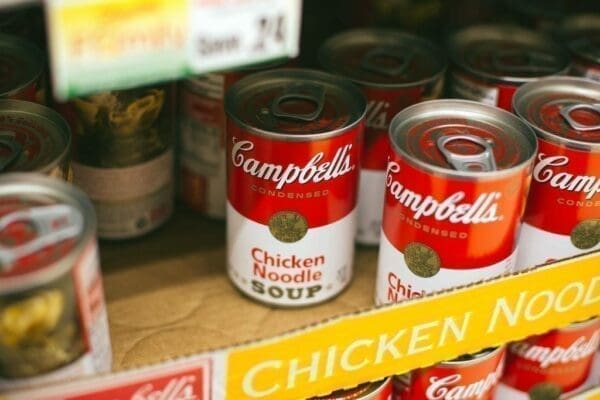Effective Trade Communications in the New Normal
As the Covid-19 lockdown gives way to the new normal, a changed Britain is emerging. We are a more caring society, appreciative of the efforts of frontline workers and increasingly concerned about the wellbeing of others, especially older people and vulnerable. But we’re also more outspoken about issues of the day, from diversity and equal opportunities to sustainability and the environment. Moreover, we are a society that is critical of people and businesses that don’t share our views and attitudes.
This growing volatility translates into trade purchasing behaviour. A growing number of independent retailers, catering operations and pubs now order stock 24/7 through apps on their mobiles. A favourable story that someone in one of these businesses sees trending one minute about a supplier or a brand on social media or a news site can have an immediate effect on their app-based purchases the next. And an unfavourable story could be disastrous. Such as a COVID outbreak in a factory, or a beloved confectionery brand switching from Fairtrade ingredients.
FMCG Suppliers & Trade Communications
Such sensitivity makes it even more important for food and drink and FMCG suppliers to think carefully about how they communicate with their trade audiences and make every Tweet and LinkedIn post count.
The traditional source of trade information, the trade press, is still there of course, but they’ve taken a bashing over the last few months due to COVID. Ad budgets have fallen and big brand campaigns have been pulled. Titles have been absorbed into other publications or gone digital-only. Some fortnightlies have gone monthly and some monthlies are now bi-monthly.
On the plus side, publishers are keen to engage advertisers with better deals, which is great for trade marketers. But the printed trade media is in long-term decline. The market is increasingly moving from print to online advertising on trade publications’ and wholesalers’ websites.
Those other pillars of trade marketing, trade shows and exhibitions and customer events have also disappeared for now. Replaced with Zoom conferences and webinars. Embrace the new normal! Before COVID, various trade magazines also ran extravagant award ceremonies recognising suppliers and operators. How these events will adapt to social distancing remains to be seen.
Meanwhile, in these times of job losses and uncertainty over furloughing and redundancy, grocery people are under incredible stress. Brands and suppliers will do well in their customers’ eyes by supporting Grocery Aid, the industry charity, who do such an excellent job helping people back to work, as this writer can testify.

A Different World
It’s a different world post-COVID, but trade marketers still need to define their messages to their target audiences. Just as it ever was, the ultimate object of trade communications is to make customers aware of your product and increase their likelihood of buying.
Online ordering and phone apps are digitising the way customers buy. However, the information the customer wants from a supplier hasn’t changed substantially over the years:
- Key products for particular trade sectors in particular product categories.
- New products by sector and category.
- Consumer support for these products.
- Offers for various buying occasions such as lunchtime, snacking, food to go, back to school, big night in, different communities’ festivals.
- Consumer trends driving sales and what the trade channels should do to maximise the opportunity.
- How suppliers work with particular customers to build their business.
Traditionally this information is communicated in print via the trade press through extensive features on product categories and category management supplements, with planograms showing the share of shelf space allocated to the brand leaders and colour photos of fixtures with products.
With our declining reading habits, such features’ days may be numbered, at least in print. Meanwhile, in many categories the big manufacturers are making much of their category information available digitally.
Cut Through the Noise
An increasingly popular way for marketers to get attention and cut through the noise is to use LinkedIn and other online media to express interesting views on how business is doing in the different trade channels. You don’t even need to come up with original thoughts, you can click on ‘like’ and share a post.

There are various topics suppliers like to talk about, which are good for generating a response. How can convenience outlets build on local goodwill generated in the lockdown? In the wholesale sector, are walk-in cash ‘n’ carries heading for extinction? Should foodservice wholesalers go on selling directly to the consumer? Some started doing so early in the lockdown to generate turnover, but should they continue? Palmer & Harvey are gone and Booker is now part of Tesco, but are we going to see more wholesalers crashing? Are buying groups becoming unworkable?
Sticky Learning ® is 7 times more effective than 1-day training courses. Plus, you will get a Chain of Evidence proving your Return on Investment. Discover soft skills training that changes behaviours long term.

Research Counts in the Trade Communications World
It’s not only about market share or usage and attitudes. As we come out of lockdown, trade agencies have been teaming up with research companies, retailers and others to pronounce on the future of the different sales channels.
One of their messages is that there’s still plenty of life left in convenience retailing. Social distanced queuing outside supermarkets has led to a new appreciation for local convenience stores that stock the various grocery categories and are open for longer. We’re also rediscovering frozen and canned food. Those old stalwarts displaced by fresh and chilled, which opens up a new dimension of possible sales in the convenience and independent outlets.

We’ve been here before of course, only now it’s different. Trade customers’ decisions about doing business with a particular supplier or wholesaler are increasingly influenced by whether they are a sustainable operation, with ‘green’ vehicles, recycling and so on, and how socially committed they are, with policies on diversity, mental health and charity links.
Conclusion
With so much ‘noise’ out there, the bottom line is that trade communication needs to be more planned than ever, with activity at specific times and targets for coverage. Use the trade press, LinkedIn and the rest strategically to build your profile and engage your target audiences. Be as disciplined about what you say as you would in a sales meeting. Be clear and consistent in your messages and make every release, feature submission and post count.
Action: For even more useful content on communication, check out our ultimate guide on communication skills.




